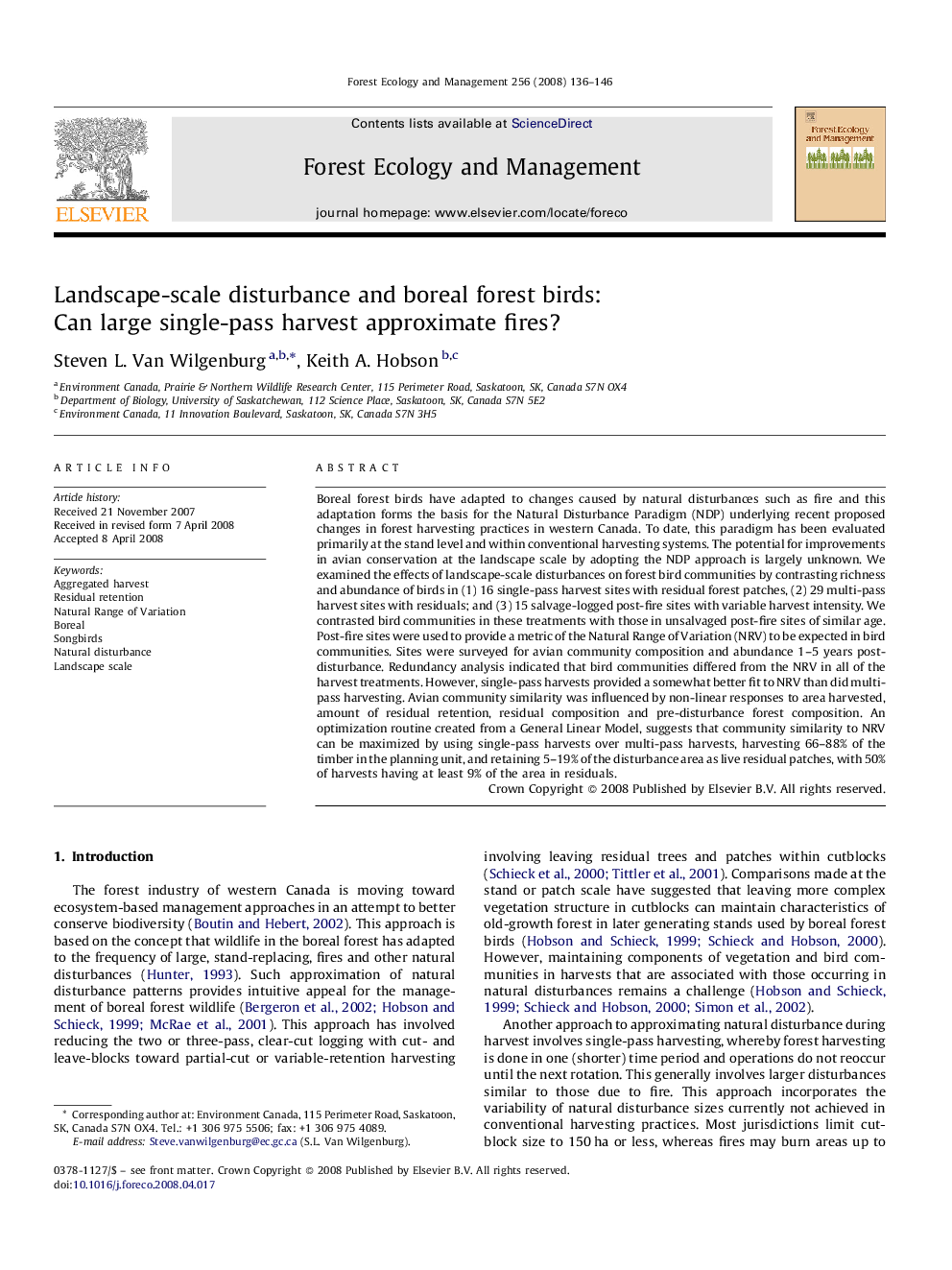| کد مقاله | کد نشریه | سال انتشار | مقاله انگلیسی | نسخه تمام متن |
|---|---|---|---|---|
| 89619 | 159348 | 2008 | 11 صفحه PDF | دانلود رایگان |

Boreal forest birds have adapted to changes caused by natural disturbances such as fire and this adaptation forms the basis for the Natural Disturbance Paradigm (NDP) underlying recent proposed changes in forest harvesting practices in western Canada. To date, this paradigm has been evaluated primarily at the stand level and within conventional harvesting systems. The potential for improvements in avian conservation at the landscape scale by adopting the NDP approach is largely unknown. We examined the effects of landscape-scale disturbances on forest bird communities by contrasting richness and abundance of birds in (1) 16 single-pass harvest sites with residual forest patches, (2) 29 multi-pass harvest sites with residuals; and (3) 15 salvage-logged post-fire sites with variable harvest intensity. We contrasted bird communities in these treatments with those in unsalvaged post-fire sites of similar age. Post-fire sites were used to provide a metric of the Natural Range of Variation (NRV) to be expected in bird communities. Sites were surveyed for avian community composition and abundance 1–5 years post-disturbance. Redundancy analysis indicated that bird communities differed from the NRV in all of the harvest treatments. However, single-pass harvests provided a somewhat better fit to NRV than did multi-pass harvesting. Avian community similarity was influenced by non-linear responses to area harvested, amount of residual retention, residual composition and pre-disturbance forest composition. An optimization routine created from a General Linear Model, suggests that community similarity to NRV can be maximized by using single-pass harvests over multi-pass harvests, harvesting 66–88% of the timber in the planning unit, and retaining 5–19% of the disturbance area as live residual patches, with 50% of harvests having at least 9% of the area in residuals.
Journal: Forest Ecology and Management - Volume 256, Issues 1–2, 10 July 2008, Pages 136–146